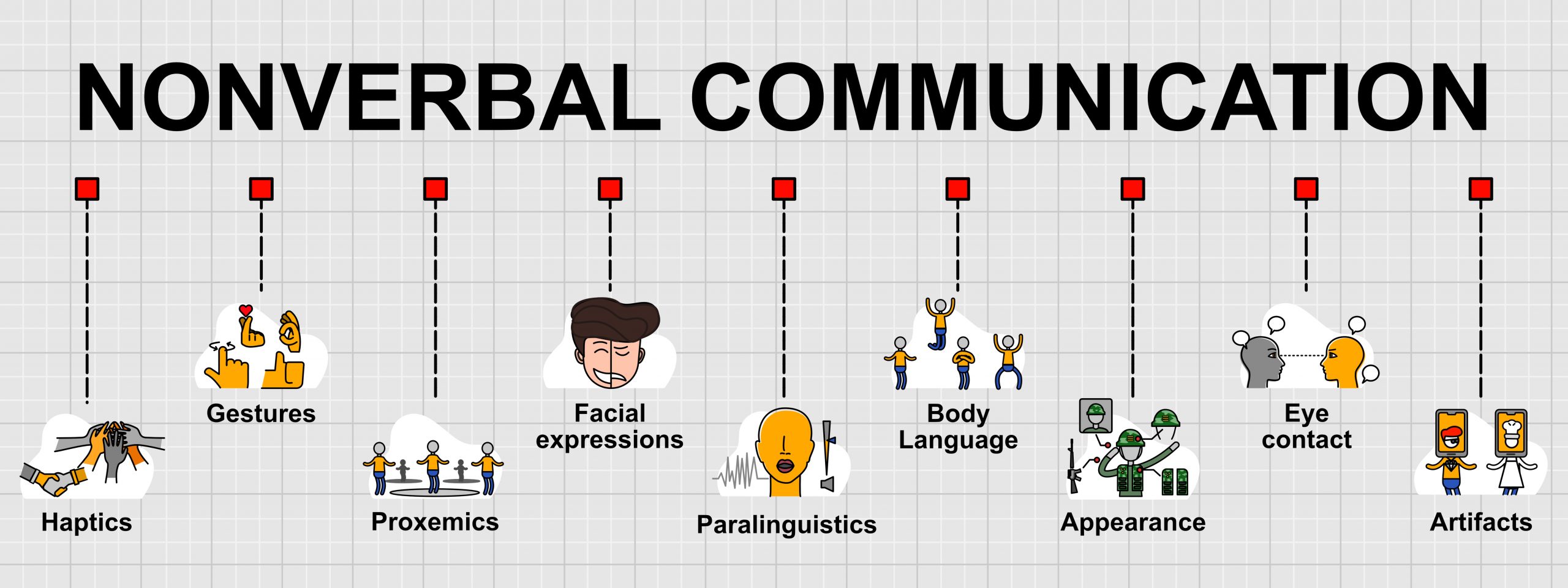Enhance Your Public Speaking Skills Within One Semester
Our experienced teachers, with years of experience teaching public speaking at various levels from foundation to advanced, provide expert guidance. Our instructors have coached students to success in prestigious competitions!
Nonverbal tips help students significantly in communication because nonverbal communication and verbal communication are the two core components of public speaking. While verbal communication can be improved with extensive practice, nonverbal communication directly impacts the audience’s ability to comprehend the message. Every gesture, from the movement of your hands to eye contact, will send different signals to the audience about your capabilities and understanding of the subject. Imagine, if you see a public speaker who delivers their point coherently and comprehensively, what will you think if they keep looking down or sideways, and put their hands behind their back?
Albert Mehrabian once wrote about the importance of verbal and non-verbal messages. He found out about the 7-38-55 rule: our words convey 7% of the meaning, our tone 38%, and our body language provides 55% of what the audience will remember.
Nonverbal language is hard to control, especially when you are too focused on presenting. Therefore, to help you be aware of your nonverbal cues and improve your body language and eye contact for future group presentations, here are eight nonverbal tips for you. We will discuss nonverbal communication in two forms: body language and tone.
Body language
1. The power pose by Amy Cuddy
Amy Cuddy, the US social psychologist, suggests the “powerful pose” – spreading your arms wide and looking confident – to help people feel more powerful. According to her research with Harvard University, “those who sat on the high-power pose, felt more powerful and had performed better in mock interviews than those who had not.” Our body influences our mind; therefore, by making the power pose, we feel more powerful and become more confident.
2. Maintain consistent breathing
The second nonverbal tip is focused on breathing. Breathing is essential in the public speaking setting. Breathing is often an undervalued and underrated method in public speaking, even though proper breathing will help you with your vocal control, pitch, and tone. For many people who have a fear of public speaking, research indicates breathing is correlated with speech anxiety. Speech anxiety causes shallower breathing: the less air we inhale, the shorter we can talk, and the less effective the presentation will be.
Before starting to speak, remember to take a deep breath by inhaling and exhaling for a quick second. This nonverbal tip allows the audience to have a short mental break before listening to your following sentence. There are multiple breathing exercises on the internet, such as from Harvard Business Review, to help you control your breathing while speaking as well.
3. Use proper hand gesture to enhance your message and improve confidence
Pay attention to where your hands are and what you are doing with them. Besides PowerPoint, Prezi, Keynote, and other presentation tools, your hands are a great way to communicate and illustrate your point of view to the audience. Using hand gestures communicates with the audience and helps them memorize better.
4. Movement - Moving your body around the stage
5. Make eye contact with everyone in the audience
Enroll in Aralia’s Comprehensive Public Speaking Courses
Tone
6. Control your voice with proper breathing
7. Consistency in public speaking

8. Having a variety of vocal
According to research, TED speakers delivering the most popular talks had 30.5% higher vocal variety. Having vocal variety will help you speak in an expressive and energized way, while helping the audience maintain interest for the whole speech. Memorizing a script and speaking like a script will turn the audience off and make them lose interest, because monotone = boring. We suggest you remember the main points of your speech, then allow for some spontaneity and flexibility in your actual presentation. In addition, depending on the environment of the stage or the amount of audience, have a higher vocal variety because the audience may have a hard time hearing you.
Practice public speaking with Aralia College Accelerator Program
Aralia College Accelerator Program offers a diverse range of public speaking classes designed to nurture profound interests and improve their public speaking skills. Our classes cover various aspects of effective communication, including persuasive techniques, audience engagement strategies, and speech delivery mastery.
The accent reduction course focuses on understanding and strengthening the unique sounds and structures that make up the “neutral” dialect. While there are many dialects throughout America, it is the neutral accent commonly practiced by public speakers and officials. Radio DJs, TV news anchors, and even most Hollywood movie actors use the neutral accent to convey their message to the largest group of Americans possible. By eliminating accents in communication, we can more easily connect to our audience and erase any misunderstandings or unconscious bias from a foreign dialect, whether domestic or international.
In this English Speaking course, each class will focus on different topics: sports, volunteer experience, current affairs, politics, culture, education, literature, technology, and the environment. These various themes are based on real situations that students will encounter when they come to the United States. Learning to discuss these topics will be very useful when interacting with native English speakers. Students will build a solid foundation in oral expression and learn how to express themselves confidently and clearly in English.
This Public Speaking and Debate class will offer the opportunity to speak and listen to others talk only as much as possible. We will alternate between learning the structure of different types of speeches and making presentations by one student to the rest of the class. After each speech by students, we will have a critique from the peers, and the teacher. They will also be required and coached on how to participate in the discussion and to critique their peers.










